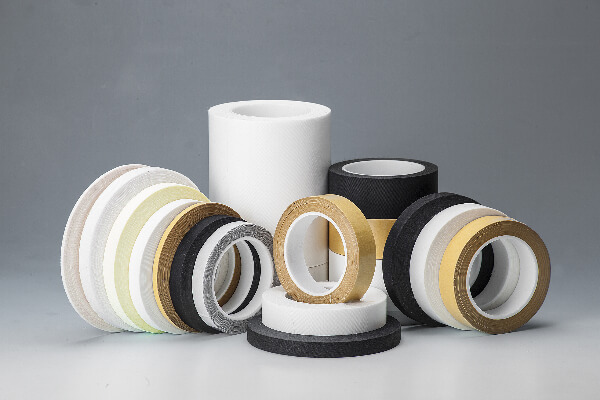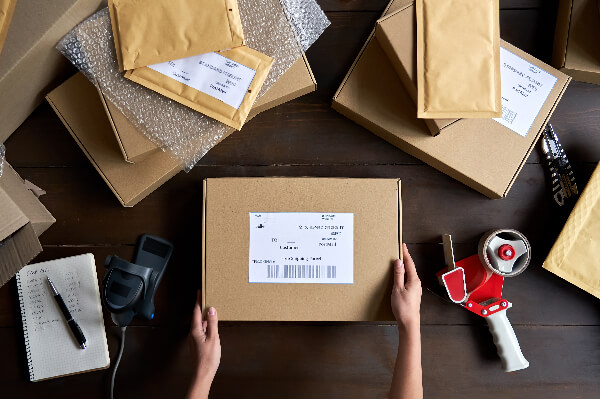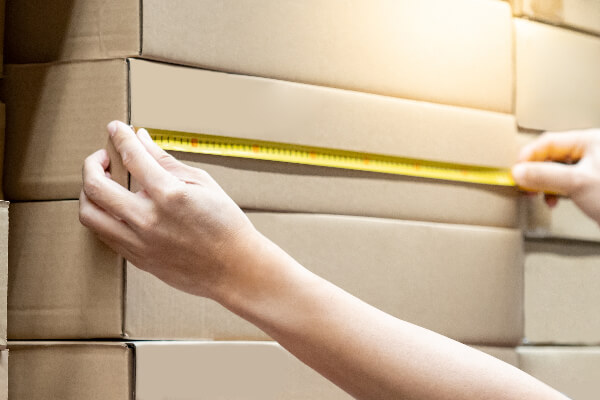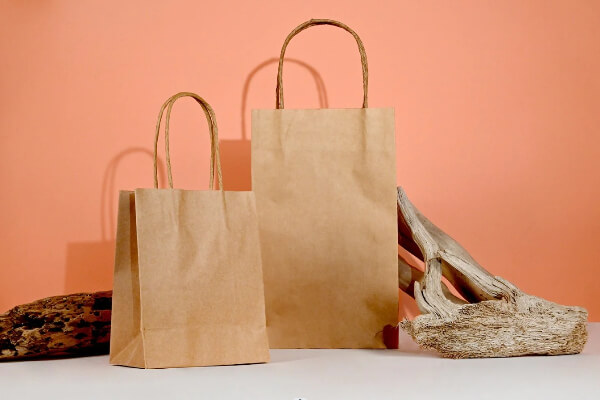What is Corrugated Cardboard?
Corrugated boxes are the cardboard boxes you would likely picture when you think about cardboard boxes. As the name suggests, they are made of corrugated cardboard, which is made by bonding core paper and linerboard. Following this, it is formed into the cardboard boxes we all use by undergoing processes such as printing logos or forming it into the shapes or sizes needed.
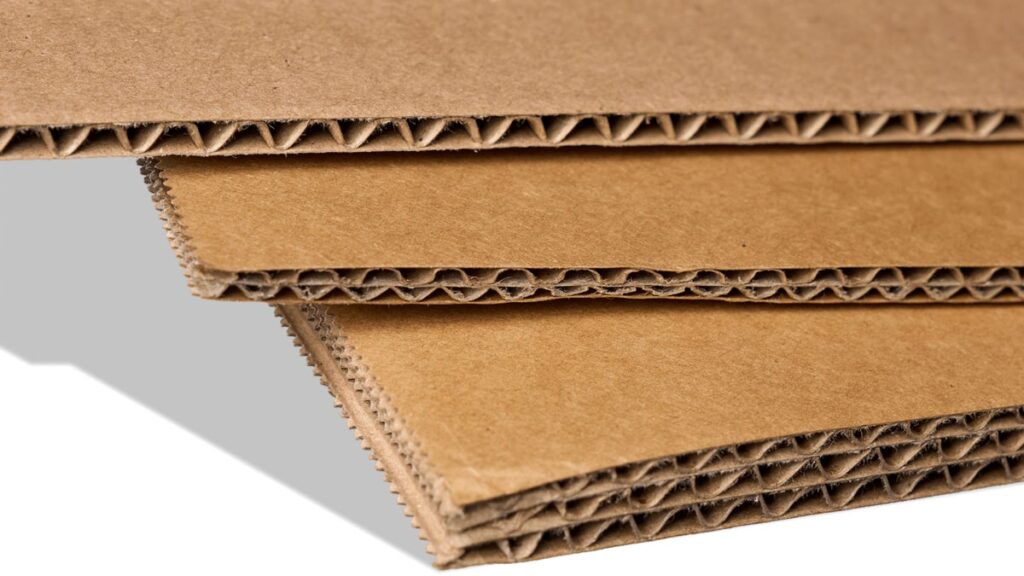
When was Corrugated Cardboard Invented?
Corrugated cardboard was invented in 1856 by English Edward G. Healy and Edward E. Allen, and despite the fact it was originally patented as a packaging tool, it was widely used as a support system for the tall hats that were fashionable at the time. Its popularity continued to grow and in the late 19th century we began to see corrugated cardboard emerge as an icon in the shipping industry. Today, it has taken its place as one of the most widely used materials for packaging and shipping across the globe.
Significance in the Packaging Industry
Corrugated boxes have become a cornerstone in the global packaging industry, replacing traditional packaging containers such as wooden boxes. This is due to their ease of use and reliability when it comes to shipping products. As far as shipping goes, they offer impressive protection and allow business owners to feel confident that their goods will arrive intact. Modern corrugated boxes are even aesthetically pleasing and eco-friendly! From fragile electronics to large industrial equipment, corrugated boxes provide reliable and affordable solutions for all packaging needs.
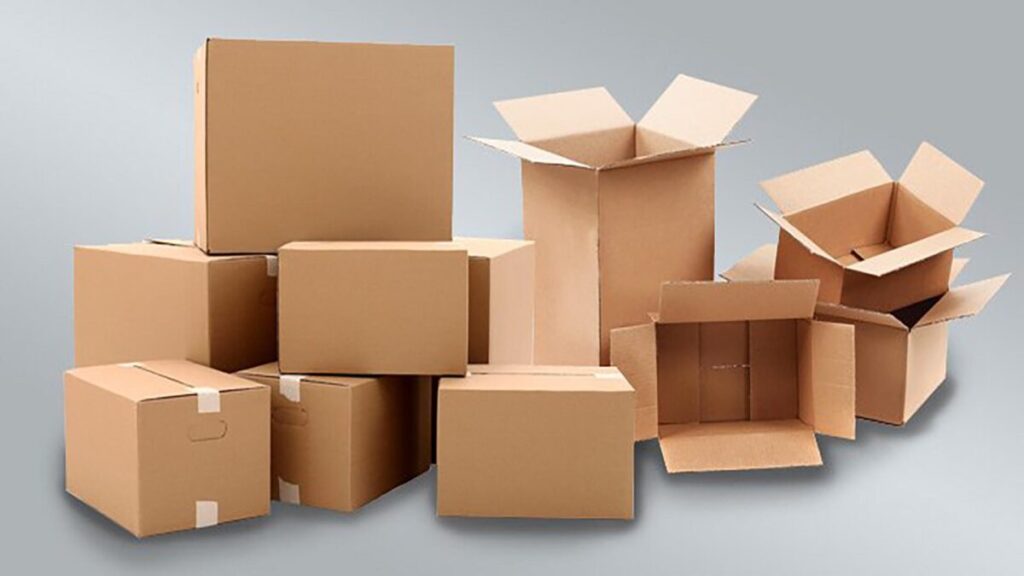
Types of Corrugated Boxes
Single-Wall Corrugated Boxes
Single-wall corrugated boxes, otherwise known as three-layered corrugated boxes, are one of the most common types of corrugated boxes. The ‘single wall’ name refers to the one layer of corrugated cardboard (the wavy portion in the middle) and the ‘three-layered’ name comes from counting each layer of linerboard and corrugated cardboard.
Double-Wall Corrugated Boxes
Double-wall corrugated boxes, as the name implies, have two layers of corrugated cardboard, and three layers of linerboard. Some people also refer to this as five-layered corrugated boxes due to the total number of linerboard and corrugated cardboard layers, as depicted in the image below!
Triple-Wall Corrugated Boxes
As you may have guessed, triple-wall corrugated boxes are made from three layers of cardboard! These boxes consist of two outer shell layers of cardboard and one layer of corrugated cardboard, providing plenty of support and cushioning. This makes the triple-wall corrugated boxes sturdier and more stable when compared to single-walled and double-walled boxes. This makes them better for heavier objects and make them an extremely popular box to use for shipping and packaging!
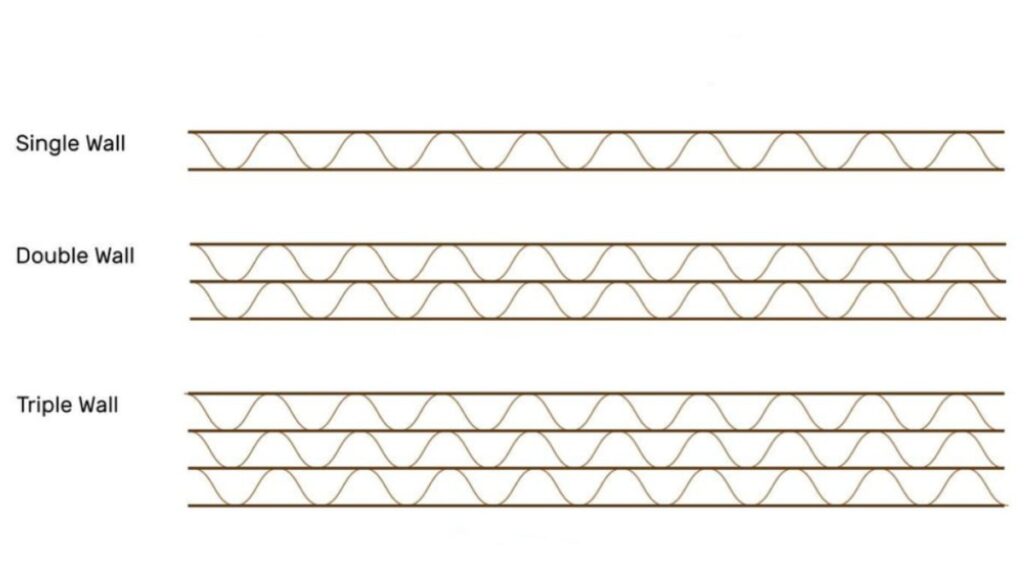
Benefits of Corrugated Boxes
There are plenty of benefits that make them the most widely used packaging material. They are designed to be the best option for your shipping needs.
Abundant Raw Materials, Low Cost
As corrugated cardboard can be made from a variety of raw materials such as wood scraps, bamboo, straw, or reeds, its cost is around half that of a wooden box. The hollow structure of corrugated cardboard maintains support while using less materials.
Strength and Durability
Their lightweight, structurally sound design offers ample cushion and protection during transportation, keeping goods safe while they are on the way to customers.
Eco-Friendly Properties
Corrugated boxes are easy to recycle and reuse, offering packing solutions that help businesses lower their environmental impact!
Customization and Printing Options
The production of corrugated boxes has been automated, making this process easy. This process can be adjusted and adapted to your specific needs, allowing you to create boxes of shapes and sizes that fit your business needs. As a bonus, they can be easily customized in the print process, allowing logos and images to show up with clarity and precision.
Convenient for Storage and Transportation
As they can be folded and laid flat, corrugated boxes are extremely convenient for storing and transportation. This also makes them easy to move throughout the transportation process and allows more efficient use of space in vehicles or warehouses.
How is Corrugated Cardboard Produced?
Raw Materials
Paperboard and linerboard are the main materials of corrugated cardboard. After combining them with adhesives, you arrive at the finished product.
Manufacturing Process
Paper Selection
Corrugated boxes are typically made using kraft paper, otherwise known as paperboard. Kraft paper is a cost-effective yet strong material sufficient to withstand long-distance transportation. The paper rolls are fed into a corrugating machine.
Corrugation Process
As the paper goes through the corrugator, two sheets of linerboard and one sheet of fluted medium. As the fluted medium goes through, a series of arches provide strength and rigidness to the box. Both the sheets of linerboard are glued to arches, resulting in the corrugated cardboard!
Cutting and Slitting
The cardboard is cut to specific lengths and trimmed to the same size by using a slitting machine, ensuring uniform boxes.
Scoring and Slotting
Following cutting, score lines are creased onto the board at precise intervals allowing the box to be folded into its final shape. Slotting machines then cut out the spaces where the flaps and tabs will fold.
Printing and Die-Cutting (Optional)
If the customer chooses to customize their boxes, this is where a few cosmetic options can be added. Logos, brand names, and other visual elements can be added. Die-cutting is a unique process that many people decide is right for them. In this process, a die-cutting machine can imprint different shapes into the cardboard or add textured cutouts to the outside.
Folding and Gluing
After the scoring and slotting are complete, the cardboard is shaped into a box. Adhesive is applied to ensure that the necessary flaps and tabs are appropriately sealed.
Quality Control
Finally, each box undergoes quality inspection to ensure the final corrugated box meets size, strength, and appearance standards before going out to customers.
Special Processing Techniques for Corrugate Boxes
There are certain techniques and customizations that allow corrugated boxes to have enhanced functionality, durability, and visual appeal. Here are several of the more common options you can choose:
Embossing and Debossing
Embossing raises a specific area of the box’s surface, creating a raised pattern or design. Debossing, on the other hand, creates a depressed pattern. These techniques add texture and visual interest to the box.
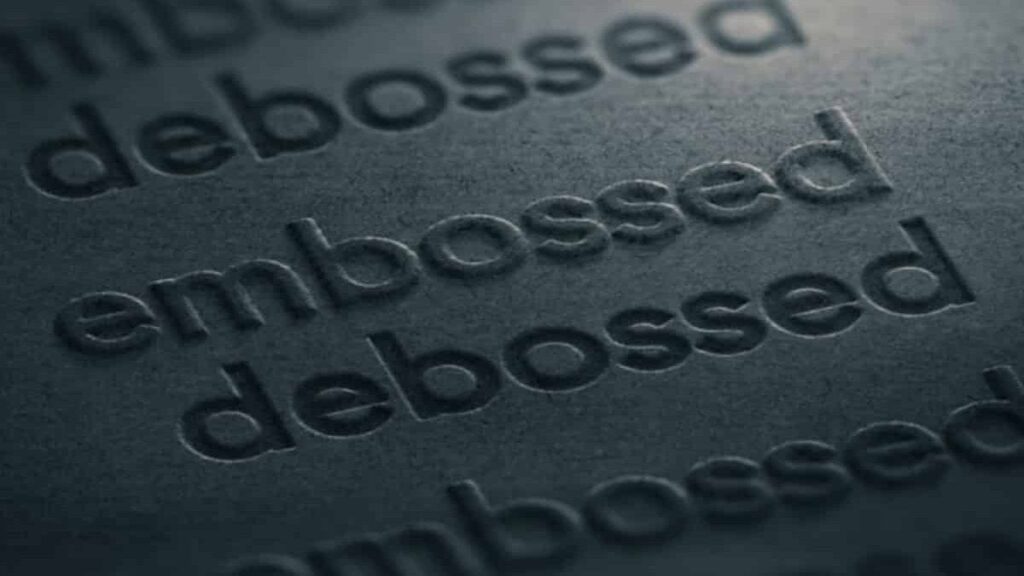
Laminating
By using lamination technology, a thin film or paper is applied to the surface of the corrugated box. This provides additional moisture resistance and enhances surface gloss.

Window Patching
This technique allows customers to see the contents of the box without opening it. It is often applied in packaging for items like baked goods or electronic products.
Perforation
Perforation involves creating a series of small holes or cuts along a designated line. These perforated edges allow for ease of access and opening for customers.
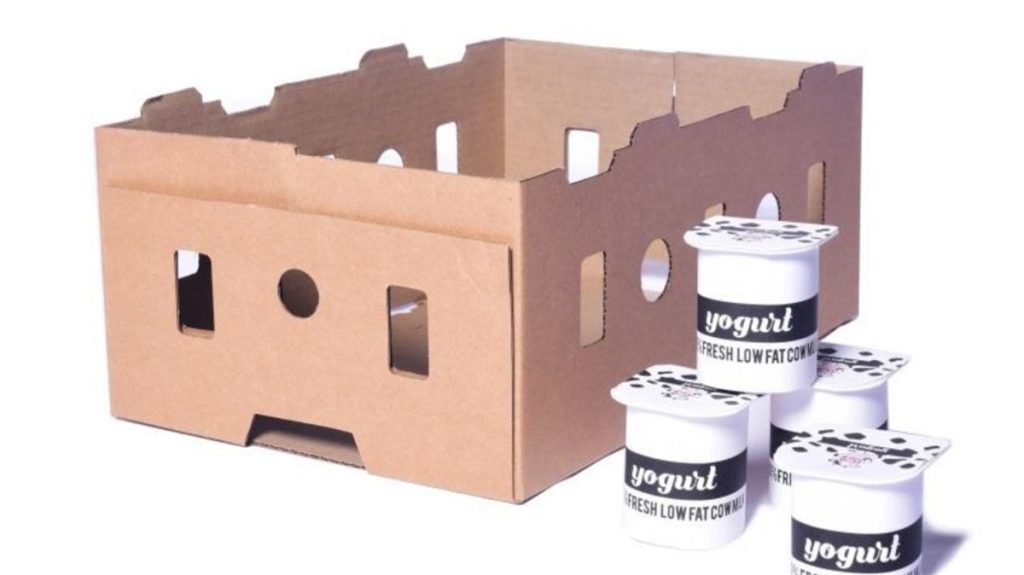
Hot Foil Stamping
Hot foil stamping applies a metallic foil to the surface of the box. This technique is done using heat and pressure and can be used to add metallic accents, creating a more distinguished look.
Spot UV Coating
Spot UV coating is a glossy, clear layer that can be applied to specific areas of the box, creating a contrast between matte and glossy finishes. It’s used for logos, graphics, or specific text that you may want to be highlighted.
Edge Sealing
Edge sealing involves applying a special coating to the corrugated board to protect it from moisture and enhancing its durability, keeping the box in top condition during the shipping process.
Anti-Static Coating
Anti-static coatings is essential if you ship electronics. This coating is applied to reduce or eliminate static electricity on the surface of the box, which can severely damage electronic components or other sensitive equipment.
Tamper-Evident Seals
As far as shipping goes, extra security can always be appreciated. Tamper-evident seals are important to help guarantee that your products are in their original condition and that no one has changed the contents. These seals indicate if the package has been opened between the time it was packaged and received by the customer.
Handles and Inserts
Handles can be added to make carrying the box more convenient during processing and delivery. Inserts and dividers can be helpful for organizing products during shipping and adding an extra layer of protection for delicate items.
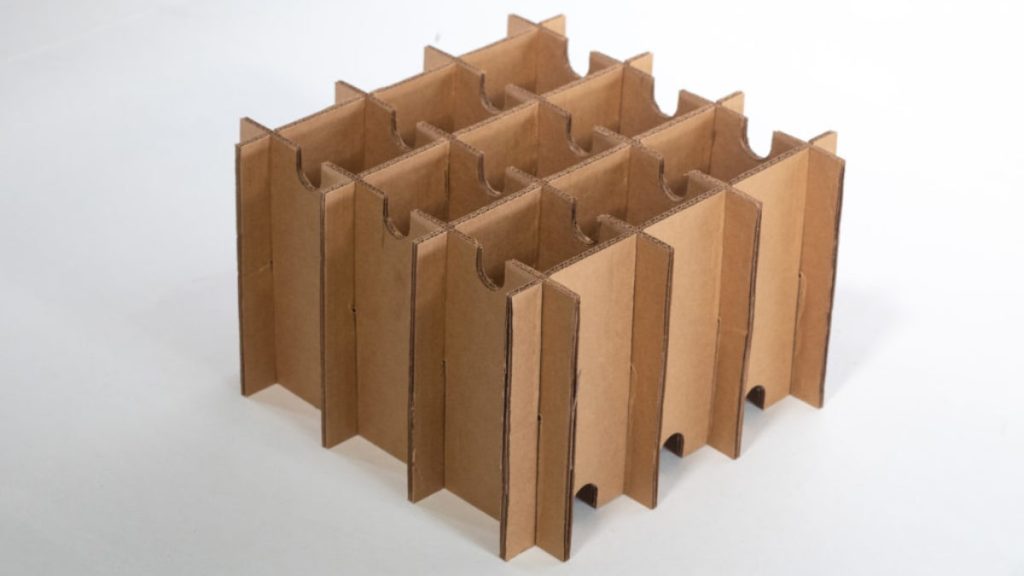
Conclusion
As far as shipping and packaging products go, corrugated boxes are a top choice. By understanding the manufacturing process, you can make a more informed decision and understand what options you have when it comes to ordering boxes for your organization’s needs. From baked goods to delicate electronics, corrugated boxes can be the product that meets your packaging needs.
If you have any other corrugated boxes wholesale, just get in touch with us at ReanPackaging.
